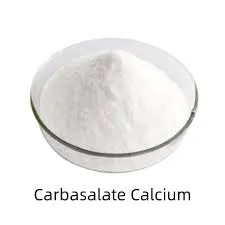- Afrikaans
- Albanian
- Amharic
- Arabic
- Armenian
- Azerbaijani
- Basque
- Belarusian
- Bengali
- Bosnian
- Bulgarian
- Catalan
- Cebuano
- Corsican
- Croatian
- Czech
- Danish
- Dutch
- English
- Esperanto
- Estonian
- Finnish
- French
- Frisian
- Galician
- Georgian
- German
- Greek
- Gujarati
- Haitian Creole
- hausa
- hawaiian
- Hebrew
- Hindi
- Miao
- Hungarian
- Icelandic
- igbo
- Indonesian
- irish
- Italian
- Japanese
- Javanese
- Kannada
- kazakh
- Khmer
- Rwandese
- Korean
- Kurdish
- Kyrgyz
- Lao
- Latin
- Latvian
- Lithuanian
- Luxembourgish
- Macedonian
- Malgashi
- Malay
- Malayalam
- Maltese
- Maori
- Marathi
- Mongolian
- Myanmar
- Nepali
- Norwegian
- Norwegian
- Occitan
- Pashto
- Persian
- Polish
- Portuguese
- Punjabi
- Romanian
- Russian
- Samoan
- Scottish Gaelic
- Serbian
- Sesotho
- Shona
- Sindhi
- Sinhala
- Slovak
- Slovenian
- Somali
- Spanish
- Sundanese
- Swahili
- Swedish
- Tagalog
- Tajik
- Tamil
- Tatar
- Telugu
- Thai
- Turkish
- Turkmen
- Ukrainian
- Urdu
- Uighur
- Uzbek
- Vietnamese
- Welsh
- Bantu
- Yiddish
- Yoruba
- Zulu
Nov . 11, 2024 00:26 Back to list
Effective Disinfection Solutions for Animal Care Facilities and Related Environments
Animal Facility Disinfectants Essential for Health and Hygiene
In the realm of veterinary medicine, research laboratories, and animal shelters, maintaining a pristine environment is paramount for the health of both animals and human handlers. The risks associated with pathogens and contaminants necessitate stringent hygiene protocols, with disinfectants playing a central role in ensuring the safety and integrity of animal facilities. This article explores the significance of animal facility disinfectants, their types, and best practices for effective use.
The Importance of Disinfectants
Animal facilities house a variety of species, each with unique vulnerabilities to infections. From domestic pets in shelters to laboratory animals used in research, the potential for disease transmission is high. Disinfectants serve as a crucial line of defense against bacteria, viruses, fungi, and parasites that can thrive in such environments. Effective sanitation practices can prevent outbreaks of infectious diseases, ensuring that animals remain healthy and that facilities operate efficiently.
Controlling cross-contamination is another essential function of disinfectants. In facilities where animals are housed in close quarters or where multiple species are present, the risk of transmitting zoonotic diseases—those that can jump from animals to humans—becomes a significant concern. By utilizing appropriate disinfectants, facilities can mitigate these risks, protecting both animal and human populations.
Types of Disinfectants
Animal facility disinfectants can be broadly categorized based on their chemical composition and modes of action. Common types include
1. Quaternary Ammonium Compounds (Quats) These are often used for surface disinfection due to their effectiveness against a wide range of microorganisms. They are typically safe for use on non-porous surfaces and in the presence of organic matter, making them suitable for kennels and veterinary clinics.
2. Chlorine-Based Disinfectants Sodium hypochlorite (bleach) is a well-known chlorine compound that is effective against bacteria, viruses, and fungi. However, its strong odor and corrosive properties require careful handling and dilution to avoid damaging surfaces or causing respiratory irritation.
3. Phenolic Compounds Known for their broad-spectrum efficacy, phenol-based disinfectants can tackle tough pathogens including viruses, making them suitable for high-burden areas. However, they can be toxic to animals if not used correctly.
animal facility disinfectant

4. Hydrogen Peroxide and Peracetic Acid These disinfectants break down into harmless byproducts, making them environmentally friendly alternatives. They are effective against a variety of pathogens and are particularly useful in areas requiring a quick turnaround between animal housing changes.
5. Essential Oils and Plant-Based Disinfectants Emerging as a more natural alternative, these products harness the antimicrobial properties of certain plants. While they may not be as potent as traditional disinfectants, they can serve as part of an integrated cleaning protocol in facilities aiming for a greener approach.
Best Practices for Use
To maximize the effectiveness of disinfectants, it is crucial to follow best practices
1. Pre-cleaning Thoroughly remove organic matter and dirt from surfaces before applying disinfectants. This ensures that the disinfectant can work effectively.
2. Contact Time Allow the disinfectant to remain on the surface for the recommended contact time to ensure the eradication of pathogens.
3. Proper Dilution Always adhere to the manufacturer's instructions for dilution rates. Incorrect concentrations can lead to diminished efficacy or potential harm to animals and surfaces.
4. Routine Cleaning Protocols Establish regular cleaning and disinfection schedules to maintain a consistently safe environment.
5. Personal Protective Equipment (PPE) Ensure staff are equipped with appropriate PPE when handling disinfectants to reduce the risk of chemical exposure.
In conclusion, animal facility disinfectants are a cornerstone of effective hygiene practices in environments housing animals. By carefully selecting and appropriately using these products, facilities can significantly reduce health risks to both animals and humans, promoting better outcomes in animal care and research. The commitment to hygiene not only assures the well-being of the inhabitants but also enhances the credibility and functionality of animal facilities.
-
Guide to Oxytetracycline Injection
NewsMar.27,2025
-
Guide to Colistin Sulphate
NewsMar.27,2025
-
Gentamicin Sulfate: Uses, Price, And Key Information
NewsMar.27,2025
-
Enrofloxacin Injection: Uses, Price, And Supplier Information
NewsMar.27,2025
-
Dexamethasone Sodium Phosphate Injection: Uses, Price, And Key Information
NewsMar.27,2025
-
Albendazole Tablet: Uses, Dosage, Cost, And Key Information
NewsMar.27,2025













